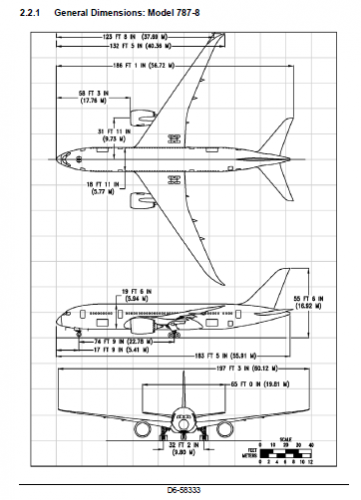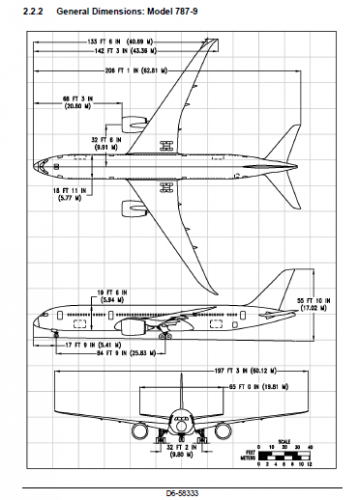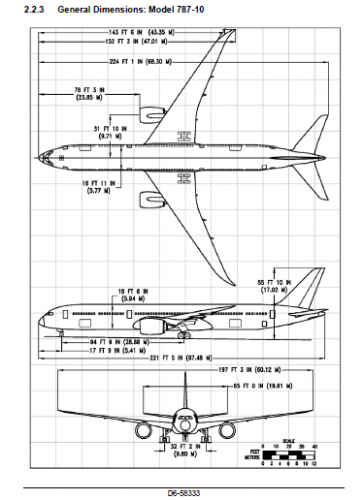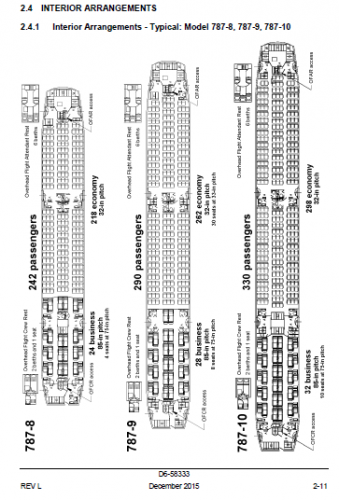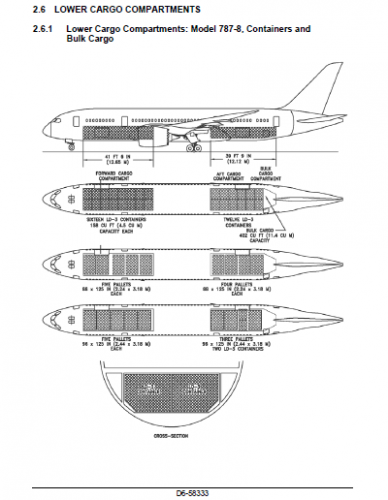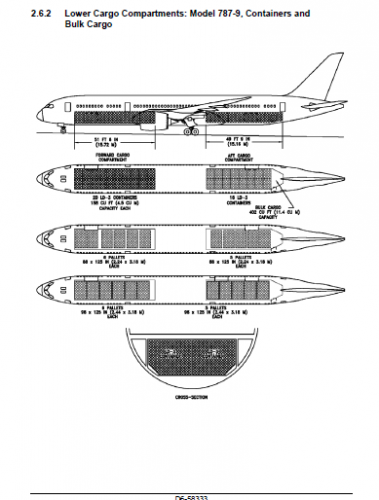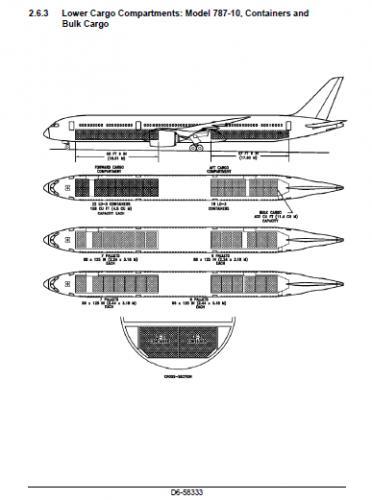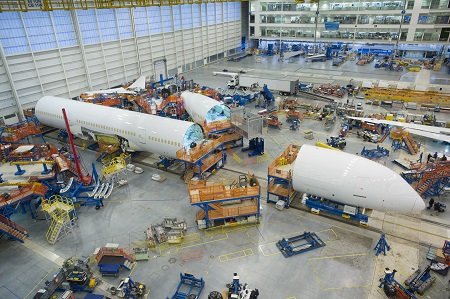There are 803 unfilled orders for the 787. They are losing money for two reasons: 1) the airplane cost BA considerably more to build than they originally estimated (don't forget, the airplane was >3yrs late which added to the overall cost), and; 2) they initially sold the airplane at an aggressive price in order to fill the order book up. BA projects the airplane will be cash flow positive at the end of this year.
You are using an out of date browser. It may not display this or other websites correctly.
You should upgrade or use an alternative browser.
You should upgrade or use an alternative browser.
Boeing 787 Dreamliner
- Thread starter Sundog
- Start date
- Joined
- 26 May 2006
- Messages
- 32,643
- Reaction score
- 11,822
blackkite said:Hi! Boeing's official drawings.
Anther drawings to Boeing 787-8,787-9 & 787-10,also a comparison.
http://www.boeing.com/assets/pdf/commercial/airports/acaps/787.pdf
Attachments
MaxLegroom
Why not?
- Joined
- 28 December 2013
- Messages
- 158
- Reaction score
- 45
Having read at least one book on the matter of building jetliners, I'm not actually surprised. They were expecting the learning curve on production to improve faster than it has, I guess, and it bit them in the butt. On the whole, it's been a bit of a mess as aircraft programs go, it seems.Steve Pace said:Somehow I just don't believe that Boeing is losing $23 million per airplane. I just can't rap my head around that. Businesses produce products to make money, not lose money. There's nearly 1,000 787s on order - multiply 23 million times that and the loses are nothing less than astronomical. So if this is true Boeing's stock holders should be more than just a little pissed off! -SP
- Joined
- 9 October 2009
- Messages
- 19,805
- Reaction score
- 10,297
http://www.telegraph.co.uk/news/2016/04/24/urgent-repairs-repairs-ordered-on-boeing-787-dreamliner-engines/
Triton said:"Will Boeing's Troubled 787 Dreamliner Finally Pay Off?"
February 11, 2015
Source:
http://www.fool.com/investing/general/2015/02/11/will-boeings-troubled-787-dreamliner-finally-pay-o.aspx
One large 787 piece, used to help join the wings to the body, shows the potential for saving. The piece, known as the double plus chord, requires Boeing to buy about 40 pounds of titanium for every pound that ends up flying on the aircraft, said Bill Bihlman, president of metal consultancy Aerolytics LLC.
After the piece is forged, a large amount of the outside must be ground off, leaving interior metal with intact grain and strength. Add in the high cost of machining hard metals like titanium, and the value of such pieces soars.
This is puzzling. The first part made like this would be expensive, but surely they can recycle the offcuts into the next forging?
IIRC aerospace grade titanium (at least of the alloys typically used) doesn't allow for re-use of swarf or similar.
- Joined
- 9 October 2009
- Messages
- 19,805
- Reaction score
- 10,297
Found this video from UTC Aero which represents Hamilton Sunstrand. It dates from 2012 but has some interesting views of the various electrical subsystems incorporated into the 787.
https://www.youtube.com/watch?v=L5JnhlJGjr4
https://www.youtube.com/watch?v=L5JnhlJGjr4
- Joined
- 9 October 2009
- Messages
- 19,805
- Reaction score
- 10,297
https://www.yahoo.com/news/japans-ana-cancels-dreamliner-flights-over-engine-trouble-105852845--finance.html
- Joined
- 9 October 2009
- Messages
- 19,805
- Reaction score
- 10,297
http://www.tank-net.com/forums/index.php?showtopic=42167
Boeing Begins Final Assembly on First 787-10 Dreamliner
http://boeing.mediaroom.com/2016-12-08-Boeing-Begins-Final-Assembly-on-First-787-10-Dreamliner#assets_117
First flight scheduled for 2017 with first delivery in 2018. All 787-10 models will be assembled in South Carolina.
http://boeing.mediaroom.com/2016-12-08-Boeing-Begins-Final-Assembly-on-First-787-10-Dreamliner#assets_117
First flight scheduled for 2017 with first delivery in 2018. All 787-10 models will be assembled in South Carolina.
Attachments
marauder2048
"I should really just relax"
- Joined
- 19 November 2013
- Messages
- 3,157
- Reaction score
- 776
Aesthetically, the 787-10 is IMHO the best of the breed.
Here's hoping that the third time is the charm for RR and GE meeting fuel burn targets on the 787.
Here's hoping that the third time is the charm for RR and GE meeting fuel burn targets on the 787.
- Joined
- 21 April 2009
- Messages
- 13,147
- Reaction score
- 5,988
http://aviationweek.com/new-civil-aircraft/boeing-targets-787-10-test-completion-december?NL=AW-19&Issue=AW-19_20171122_AW-19_479&sfvc4enews=42&cl=article_2&utm_rid=CPEN1000000230026&utm_campaign=12749&utm_medium=email&elq2=92c3ffdb49384144ab56238999814cfa
- Joined
- 9 October 2009
- Messages
- 19,805
- Reaction score
- 10,297
- Joined
- 9 October 2009
- Messages
- 19,805
- Reaction score
- 10,297
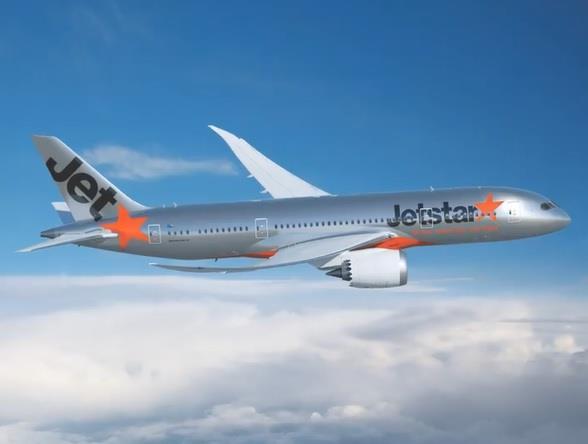
Jetstar 787 biocide treatment led to dual engine thrust roll-back
Japanese investigators believe biocide treatment of fuel on a Jetstar Airways Boeing 787-8 led to the aircraft's losing thrust in both engines during a service to Osaka's Kansai airport two days later. The aircraft (VH-VKJ) had departed Cairns on 29 March last year. As it descended through...
- Joined
- 9 October 2009
- Messages
- 19,805
- Reaction score
- 10,297
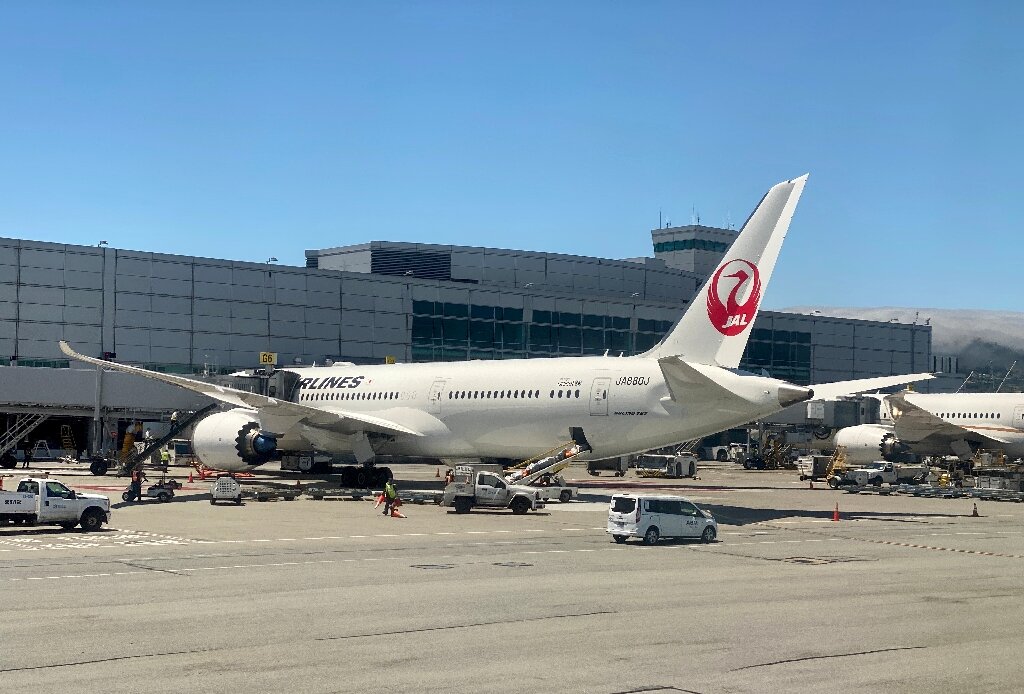
US aviation authority investigating Boeing 787 manufacturing flaws
The US aviation authority is investigating manufacturing flaws in the Boeing 787 after the company reported that certain plane parts did not conform to its production standards.
- Joined
- 9 October 2009
- Messages
- 19,805
- Reaction score
- 10,297
- Joined
- 9 October 2009
- Messages
- 19,805
- Reaction score
- 10,297
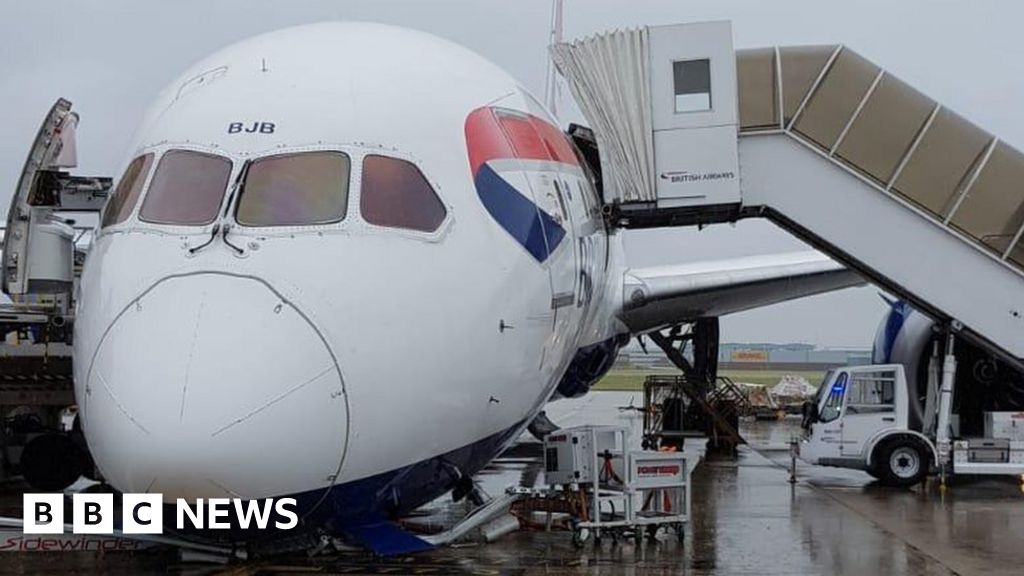
BA plane damaged after tipping forward at Heathrow
Images on social media showed more than a dozen emergency service vehicles in attendance.
- Joined
- 9 October 2009
- Messages
- 19,805
- Reaction score
- 10,297
Boeing Slows Dreamliner Production After New Manufacturing Issue
Boeing expects the newly discovered defect to take at least a few weeks to address, meaning customers might not get new Dreamliners for much of the traditionally busy summer travel season.
DWG
ACCESS: Top Secret
- Joined
- 11 February 2007
- Messages
- 1,754
- Reaction score
- 2,282
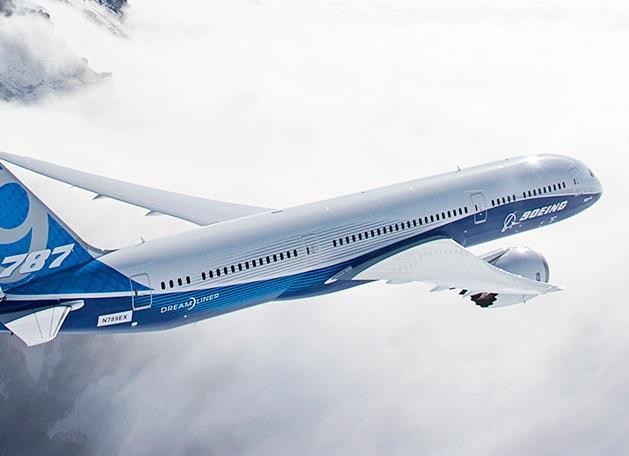
Boeing’s undelivered 787s have another manufacturing problem: FAA
The Federal Aviation Administration has learned of a new manufacturing problem found on the nose section of some undelivered Boeing 787s - an issue that Boeing must address before delivering the jets.
DWG
ACCESS: Top Secret
- Joined
- 11 February 2007
- Messages
- 1,754
- Reaction score
- 2,282
Shouldn't such posts about quality problems be in the aviation and space section?
They are not about unbuilt projects.
Then you'd have someone complaining that there are already 787 threads they could go in. I'm happy to post such stuff wherever Admins decide, but there's no one option that will please everyone.
- Joined
- 9 October 2009
- Messages
- 19,805
- Reaction score
- 10,297
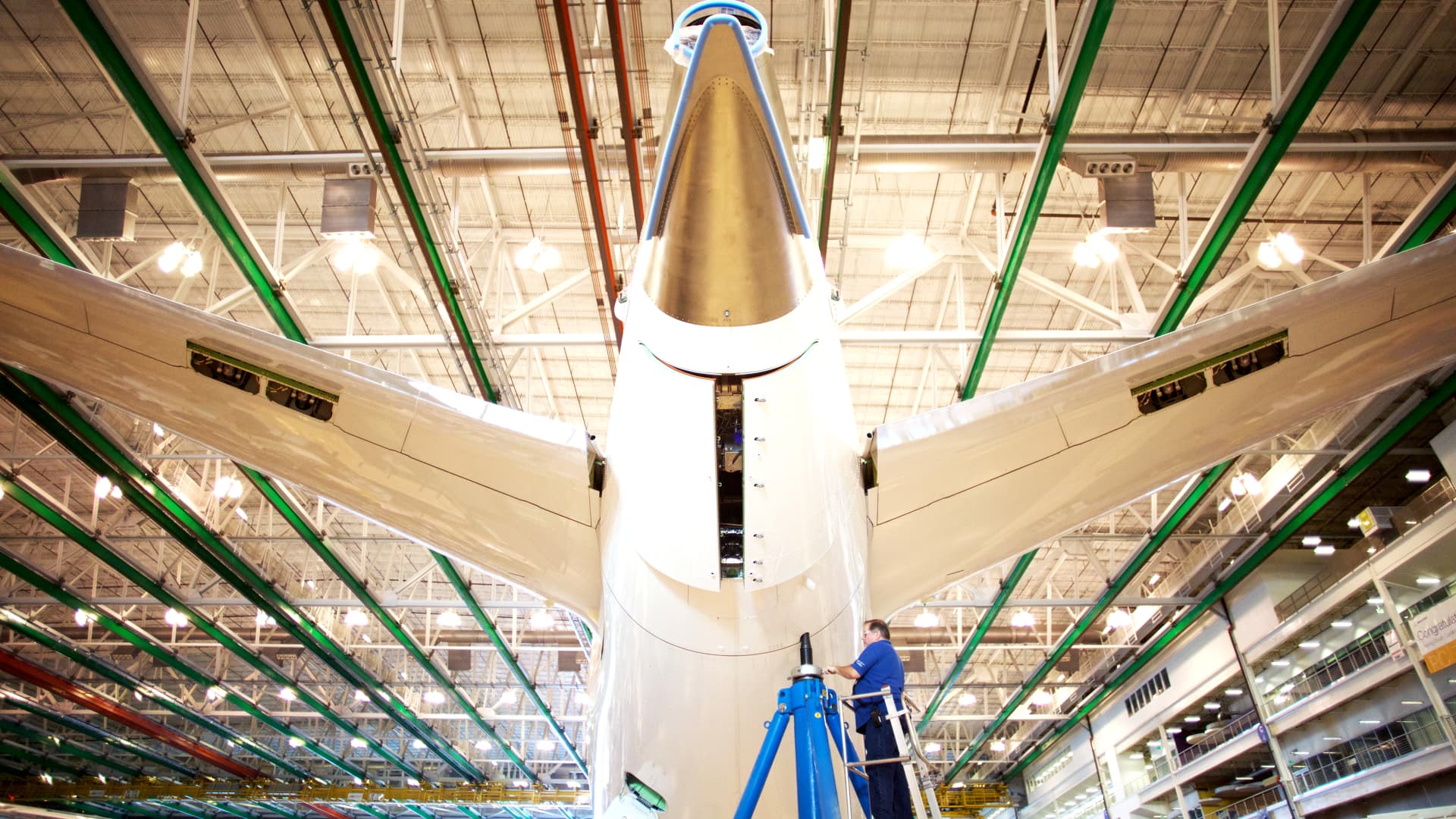
Boeing cuts 787 Dreamliner production, delivery target after new flaw found
Boeing says it will deliver fewer than half of the Dreamliners in its inventory this year and temporarily cut production because a new flaw was found.
- Joined
- 9 October 2009
- Messages
- 19,805
- Reaction score
- 10,297
Meant to post this last week:
Big headaches for Boeing as Dreamliner deliveries remain halted (ft.com, registration or subscription may be required)
Big headaches for Boeing as Dreamliner deliveries remain halted (ft.com, registration or subscription may be required)
For the past two years Boeing has relied on its Dreamliner passenger jet, the company’s popular widebody aircraft, to deliver sales after the grounding of the 737 Max following two fatal crashes.
Now the tables are turned. The Max, the workhorse of the Boeing family of jets, is back in service and the group is filling a backlog of orders, while deliveries of the 787 Dreamliner remain halted after production setbacks.
The 787 glitches have grown to the point that Boeing has warned it may record a forward loss on the Dreamliner programme, possibly on Wednesday when the company reports second-quarter results.
But the issue raises what S&P Global analyst Christopher Denicolo called the “however-many-billion-dollar question”: why is Boeing having problems manufacturing this plane?
The Chicago-based company said this month that the majority of the more than one hundred 787s already produced will not be delivered this year — contrary to assurances made by chief executive David Calhoun in April.
Boeing also cut the wide-body jet’s production rate earlier in July to fewer than five a month, which together with the company’s warning suggests a forward loss will be declared on the programme.
Boeing delivered 14 Dreamliners in the first half of the year compared with 158 in 2019 and 53 in 2020, when it comprised the bulk of the company’s commercial deliveries. This compares with the delivery of 113 737s in the first half of the year, 127 in 2019 and 43 in 2020.
The company stopped deliveries of the Dreamliner in October while the FAA investigated how workers had installed the wrong-sized shims — thin pieces of material used to create a better fit — in joints between fuselage sections on some 787s. Separately, some aircraft did not meet engineering specifications for skin flatness.
Boeing resumed making deliveries in March, only to halt them again in May after the FAA requested more data on how the manufacturer planned to inspect the planes.
Then, on July 13, Boeing said it would “temporarily” drop the production rate to fewer than five a month after it discovered a new flaw: problems with the fit and finish of the forward pressure bulkhead, contained in the nose of the plane, built by its supplier Spirit AeroSystems*.
DWG
ACCESS: Top Secret
- Joined
- 11 February 2007
- Messages
- 1,754
- Reaction score
- 2,282
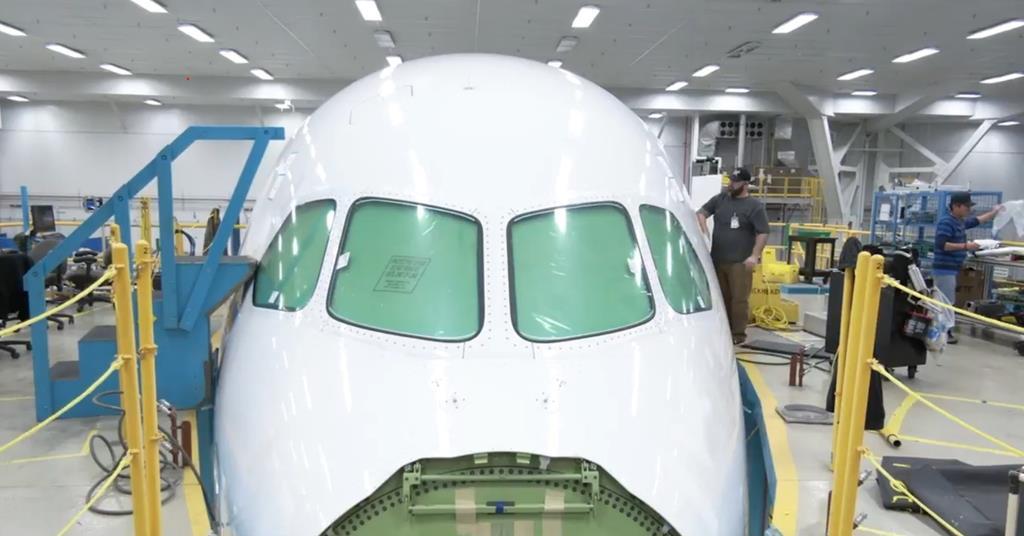
Boeing video reviews fuselage ‘gap’ issue that prompted 787 delivery halt
Boeing has released a video about the fuselage-related quality issues that led the company to halt deliveries of 787s. The Chicago-based airframer released the video on 23 July alongside an email from Boeing Commercial Airplanes chief executive Stan Deal to all Boeing's commercial aircraft...
More on the tolerance issues. My immediate response to "it's only 5/1000 of an inch" is tolerances are set for a reason.
ETA: And on further thought downplaying safety issues is precisely the wrong stance for Boeing to be taking right now (and every company employee below senior management level will recognise that).
Last edited:
- Joined
- 9 October 2009
- Messages
- 19,805
- Reaction score
- 10,297
Link seems to be down.
DWG
ACCESS: Top Secret
- Joined
- 11 February 2007
- Messages
- 1,754
- Reaction score
- 2,282
My fault for trying to trim off an excessive amount of tracking. Fixed now.Link seems to be down.
- Joined
- 9 October 2009
- Messages
- 19,805
- Reaction score
- 10,297

Boeing Finds New Defect in Ongoing Struggle To Produce Dreamliner 787 - Slashdot
Boeing and U.S. regulators said Thursday that some titanium 787 Dreamliner parts were improperly manufactured over the past three years, the latest in a series of problems to plague the wide-body aircraft. From a report: The quality issue does not affect the immediate safety of flights, the...
tech.slashdot.org
- Joined
- 29 September 2006
- Messages
- 1,626
- Reaction score
- 1,022
The problems of an engineering company that isn’t interested in engineering are never ending…
Boeing Finds New Defect in Ongoing Struggle To Produce Dreamliner 787 - Slashdot
Boeing and U.S. regulators said Thursday that some titanium 787 Dreamliner parts were improperly manufactured over the past three years, the latest in a series of problems to plague the wide-body aircraft. From a report: The quality issue does not affect the immediate safety of flights, the...tech.slashdot.org
FighterJock
ACCESS: Top Secret
- Joined
- 29 October 2007
- Messages
- 4,186
- Reaction score
- 3,349
The problems of an engineering company that isn’t interested in engineering are never ending…
Boeing Finds New Defect in Ongoing Struggle To Produce Dreamliner 787 - Slashdot
Boeing and U.S. regulators said Thursday that some titanium 787 Dreamliner parts were improperly manufactured over the past three years, the latest in a series of problems to plague the wide-body aircraft. From a report: The quality issue does not affect the immediate safety of flights, the...tech.slashdot.org
Not the 787 as well as the KC-46 tanker having problems? I hope for Boeing’s future that they can solve the issue with the 787, otherwise I can see airliners stopping buying the Dreamliner and starting to buy the Airbus A-350 instead.
DWG
ACCESS: Top Secret
- Joined
- 11 February 2007
- Messages
- 1,754
- Reaction score
- 2,282
The problems of an engineering company that isn’t interested in engineering are never ending…
Boeing Finds New Defect in Ongoing Struggle To Produce Dreamliner 787 - Slashdot
Boeing and U.S. regulators said Thursday that some titanium 787 Dreamliner parts were improperly manufactured over the past three years, the latest in a series of problems to plague the wide-body aircraft. From a report: The quality issue does not affect the immediate safety of flights, the...tech.slashdot.org
I suspect you also have to consider it as a late consequence of Boeing's attempted union-bashing over 787 manufacture. First they threatened to take it entirely to a non-union state, compromised on splitting it between Everett and a new facility in South Carolina after the Machinists brought in the National Labor Board, then they shut down the Everett production line this year.
They've got production staff in South Carolina with a lower experience profile, and I suspect experienced engineering staff in Seattle/Everett will have been avoiding 787 in case they end up being told they have to move to SC if they want to keep their jobs. It's not a recipe for developing a strong quality function. And we can see how much of a problem they're having from what the airlines are saying:
"KLM Royal Dutch Airlines described the factory's quality control as "way below acceptable standards" when talking about a new 787-10 delivered in spring. Among several issues noted were loose seats, missing and incorrectly installed pins, nuts and bolts not fully tightened, and a fuel-line clamp left unsecured."
That would have been unacceptable in the first year of production, it's actually from 2019.
Airlines flying Boeing's 787-10 Dreamliner are complaining about quality they say is 'way below acceptable standards'
The complaints, in internal surveys Boeing issues to customers, focus on the North Charleston, South Carolina, factory where Boeing builds 787s.
"Boeing said the parts were provided by Leonardo SpA (LDOF.MI), which bought the items from Italy-based Manufacturing Processes Specification (MPS). MPS is no longer a supplier to Leonardo, Leonardo confirmed."The problems of an engineering company that isn’t interested in engineering are never ending…
Boeing Finds New Defect in Ongoing Struggle To Produce Dreamliner 787 - Slashdot
Boeing and U.S. regulators said Thursday that some titanium 787 Dreamliner parts were improperly manufactured over the past three years, the latest in a series of problems to plague the wide-body aircraft. From a report: The quality issue does not affect the immediate safety of flights, the...tech.slashdot.org
- Joined
- 29 September 2006
- Messages
- 1,626
- Reaction score
- 1,022
Sure, the root source was a faulty supplier, but I’d hope an aircraft company that cared about its product would have some QA to catch such problems in a much shorter time than 3 years."Boeing said the parts were provided by Leonardo SpA (LDOF.MI), which bought the items from Italy-based Manufacturing Processes Specification (MPS). MPS is no longer a supplier to Leonardo, Leonardo confirmed."The problems of an engineering company that isn’t interested in engineering are never ending…
Boeing Finds New Defect in Ongoing Struggle To Produce Dreamliner 787 - Slashdot
Boeing and U.S. regulators said Thursday that some titanium 787 Dreamliner parts were improperly manufactured over the past three years, the latest in a series of problems to plague the wide-body aircraft. From a report: The quality issue does not affect the immediate safety of flights, the...tech.slashdot.org
- Joined
- 29 September 2006
- Messages
- 1,626
- Reaction score
- 1,022
The problems of an engineering company that isn’t interested in engineering are never ending…
Boeing Finds New Defect in Ongoing Struggle To Produce Dreamliner 787 - Slashdot
Boeing and U.S. regulators said Thursday that some titanium 787 Dreamliner parts were improperly manufactured over the past three years, the latest in a series of problems to plague the wide-body aircraft. From a report: The quality issue does not affect the immediate safety of flights, the...tech.slashdot.org
I suspect you also have to consider it as a late consequence of Boeing's attempted union-bashing over 787 manufacture. First they threatened to take it entirely to a non-union state, compromised on splitting it between Everett and a new facility in South Carolina after the Machinists brought in the National Labor Board, then they shut down the Everett production line this year.
They've got production staff in South Carolina with a lower experience profile <SNIP>
I’d actually roll that into engineering myself - engineering is about delivering a product to do a job safely and to spec. Anything that is done in a company that works against the standards of engineering shows a lack of interest in engineering.
- Joined
- 1 May 2007
- Messages
- 2,458
- Reaction score
- 1,450
I read quite some time ago, might have been on here, that this was Boeing's business model. All the real work done by sub-contractors, Boeing just throw the parts together, paint 'Boeing' on the result, and take the money . . .
cheers,
Robin.
cheers,
Robin.
DWG
ACCESS: Top Secret
- Joined
- 11 February 2007
- Messages
- 1,754
- Reaction score
- 2,282
I read quite some time ago, might have been on here, that this was Boeing's business model. All the real work done by sub-contractors, Boeing just throw the parts together, paint 'Boeing' on the result, and take the money . . .
Any aerospace project is necessarily going to have a big supply chain. But what we might be seeing here is a consequence of Boeing aggressively squeezing their supply chain to drive costs down, which has been drawing complaints for a few years now. The problem this creates if you're a small supplier way down the chain is you have a whole series of higher tier subs, all trying to squeezet their subcontractors as a result, and for the little shop with small margins that can force them to look for cheaper ways to produce their parts, and the potential for not realising when they go out of spec (or being so desperate they hope no one will notice). Their QA should catch it, as should the QA departments of each contractor all the way up to Boeing internal QA, but if they're all being driven by management to produce work quicker and cheaper, then something will inevitably slip through.

